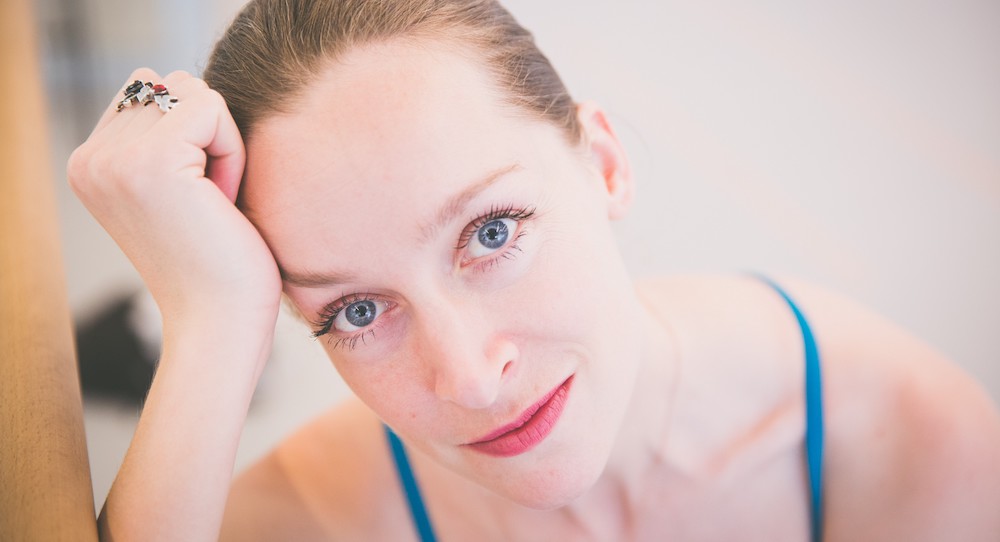Once upon a time, there was a girl called Alice, and Alice grew up to be a ballerina with The Australian Ballet. She hadn’t thought of doing anything else except dancing, until one day, fate intervened.
The now-resident choreographer had fallen ill prior to the 2014 BodyTorque program, and David McAllister, The Australian Ballet’s artistic director, needed someone to produce a new work…rather quickly. The hand of fate arrived from an unexpected quarter. The Music Director and Chief Conductor for The Australian Ballet, Nicolette Fraillon, intervened with a suggestion to McAllister.

“Why not ask Alice If she would like to take the opportunity?” Let’s skip forward a few years.
Tell us about your Helpmann Award in 2019. What is the meaning of Aurum?
“’Aurum’ means gold in Latin, and the idea came from the Japanese art of repairing something that is broken with gold so that it is more beautiful than the original. Kintsugi, or Kintsukuroi, is the centuries-old Japanese art of fixing broken pottery.
Winning the award for team Aurum was just this beautiful brown paper package tied up with string. It was the perfect ending to this beautiful period of time. It was lovely for the work to be recognised, lovely for everyone involved to see the work resonate and connect with audiences, and it was a beautiful recognition of that piece of art. It was great for us to trust our gut and keep on going with it and believe in what we were saying. There’s always artist’s self-doubt when something like that happens, so it was really an acknowledgment of us running with an idea and the belief we had in sharing that story. It was really special.
It was definitely a collaboration. John Boswell did the set design; the dancers came up with ideas. Even though we communicate through our body, we had all shared that creative vision. So I had 12 beautiful dancers whom I created that work on, and the lighting designer John Boswell, everyone in the costume department who helped me source fabric, and all the tech guys who realised John’s vision with the gold Parquette, the set design. It was a huge team effort that brought that vision to life. It sounds like a Cinderella story with all these people — absolute harmony when you have this passion and you really share that vision, all invested in bringing this story to life. And then before you know it, you have a whole team of people who really want to work and join in th at experience. I feel like for me, that’s the most rewarding part. We all come together to create art and then disperse, but it’s nice to know that you’ll have that journey forever.”
How did the collaboration with Wayne McGregor come about?
“Initially, it was supposed to be a McGregor triple bill, but Wayne ran out of time, so David suggested that I spend a month in London with Wayne, who could mentor me and I could watch his creative process. I said, ‘Yes, please!’ And then to have my work to bookend the Trilogy work is just so special.
So, off the back of the NY tour, I went over there and I created a 10-minute duet on his Company Wayne McGregor and also restaged my work, Little Atlas. I only had two-and-a-half weeks to restage Little Atlas and create the duet, and then I spent a week watching Wayne work on a new work. What is really beautiful is that VOLT is a triple bill with Wayne McGregor’s Chroma and Dyad 1929, and David suggested I create the third spot in the triple bill.”
What was that experience like, and what surprised you during that time with McGregor?
“He’s so incredibly fast! He creates movement so quickly; I just wanted to absorb it all like a sponge. He’s just a genius at work watching him create. Everything’s so planned out. He’s just the smartest man on the planet. I just can’t keep up with him. You’ll have a conversation, and I’m still back at the first word. He works very quickly, and he challenges dancers; he asks questions, and he wants thinking dancers. It was brilliant watching this master at work.”
What do you think audiences will take away from VOLT, the triple bill?
“I really hope people leave the theatre thinking, questioning and being moved. We’re looking forward to getting into the theatre and to see the sets, the designs, to see all the elements come together. And that moment when we hear the orchestra play rather than the recording we’ve been using — to hear that for the first time is such a dream. It will challenge audiences as much as the dancers — it is just such a sharp, punchy, moving, edgy, fun, thrilling evening. Chroma is thrilling, fast-paced, electric. It has extreme movement and shapes, just a delight to dance. Dyad 1929 was created on our company in 2009. I was second cast and was lucky to be part of that process.”
The Australian Ballet will present triple bill VOLT in Melbourne from 13 – 24 March, and in Sydney from 3 – 22 April. For tickets and more information, visit australianballet.com.au/the-ballets/volt.
By Elizabeth Ashley of Dance Informa.

















